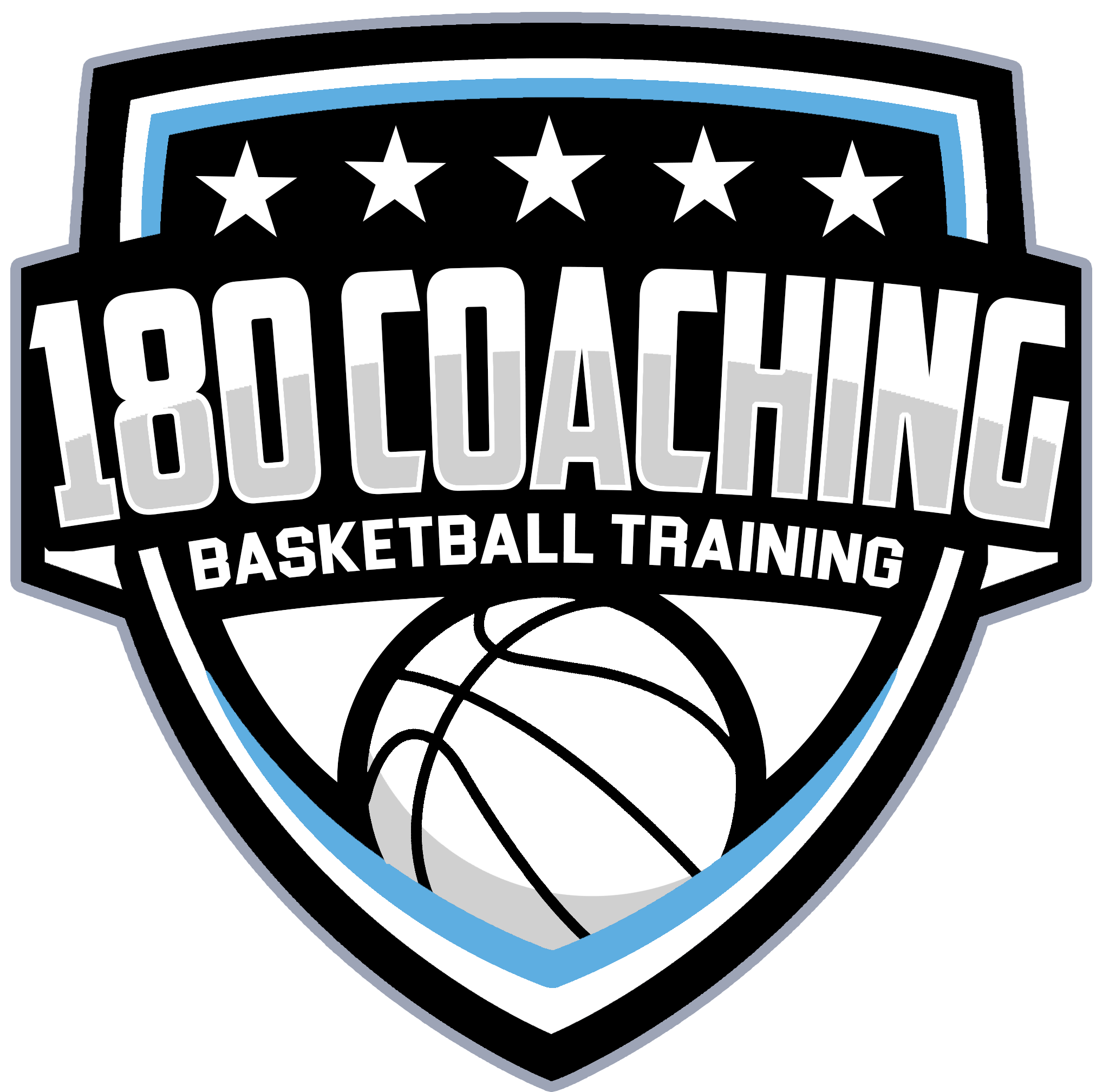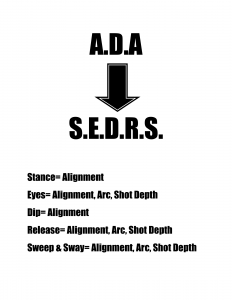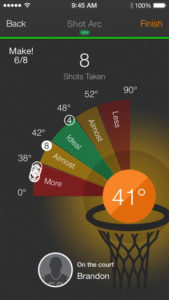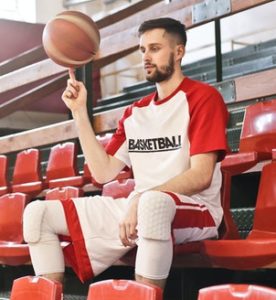Published 12/31/2014
The Art of Shooting a Basketball
Check Out my Masterclass on Basketball Immersion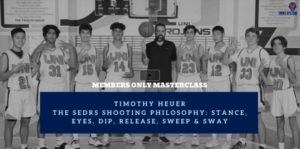
180 Coaching is a basketball shooting mechanics website outlining the key elements of becoming a great shooter. My hope is to give players and coaches a helpful resource on proper basketball shooting fundamentals. Basketball shooting coach Tim Heuer created this basketball shooting philosophy in 2014. The Acronym S.E.D.R.S stands for Stance, Eyes, Dip, Release, Sweep & Sway. These shooting principles take into account some of the most current basketball shooting concepts and combines them into one concentrated format. Most of these newer basketball shooting techniques cut against the grain of conventional wisdom in regards to traditional basketball shooting mechanics. If you are looking at learning the proper basketball shooting mechanics then I hope this site and all of its basketball shooting tips help you.
According to a Sloan sports analytics paper written by Rachel Marty and Simon Lucey University of California, San Diego and Carnegie Mellon University. The most important factors of shooting a basketball are Alignment (left-right consistency), Shot Depth, and Arc (angle of the shot, angle consistency). Improving on these concepts will improve shooting. How do we improve on these concepts by using the S.E.D.R.S. shooting philosophy? This is where the art of shooting begins.
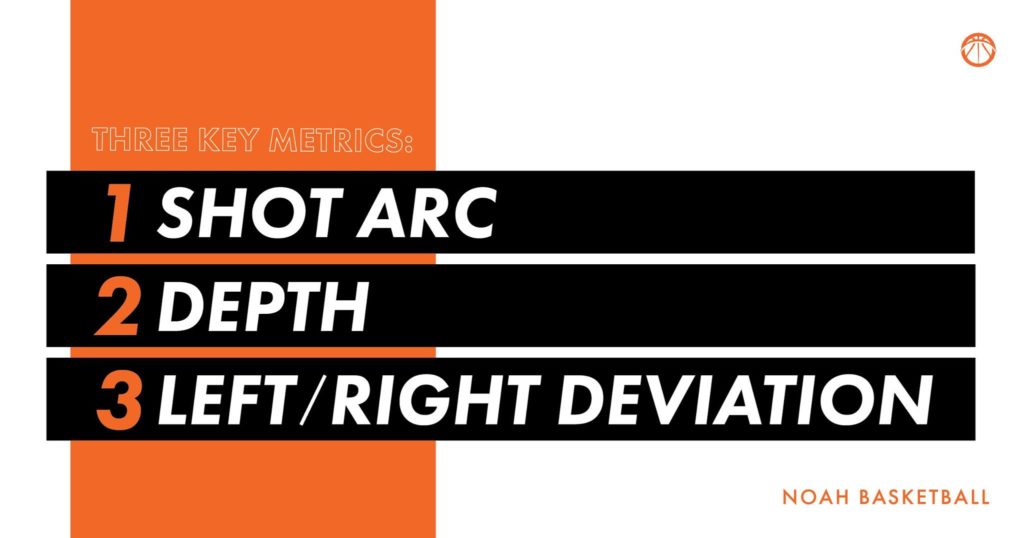
“S” symbolizes Stance.
S.E.D.R.S. PART 1 OF 5
-
Feet turned toward your off-hand to 10 O’clock or 2 O’clock depending on if your right or left-handed.
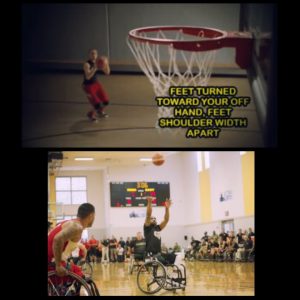
-
Ball on the palm of the hand.
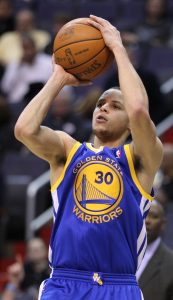
-
Feet shoulder-width apart, but should land either narrow between 1-3 inches apart or shoulder width or slightly wider than shoulder-width apart.
SHOOTING HAND ON THE SIDE OF THE BALL!!!
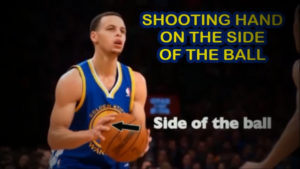
-
UNIFORMITY is why we place our shooting hand on the side of the ball. We want our Layups, free throws, and jump shots to use the same principles and have the same motion. This cuts down on the clutter. Sadly most players use different techniques for their jump shots, free throws, and layups. We want to streamline the shooting process by using the same techniques on all of our shots.
-
Here is a clip of the One Arm Hooper Hansel Emmanuel Shooting with his Hand on the side of the basketball, Ball on the palm of his hand, Palm rotating towards the Rim, and eyes watching the flight of the ball. All of which are principles in the SEDRS Shooting System.
-
Shoot hand approximately 4 O’Clock for right-handers and 8 O’Clock for left-handers. When holding the ball a good rule of thumb is when you look down at your hands you should see all of your fingers except your pinky on your shooting hand. This lets you know that your hand is in the right position.
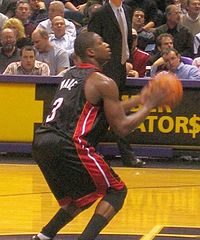
-
Offhand on the side.
-
After release Off-hand stays on the side then rotates towards the rim. (Steph Curry tucks his off-hand thumb in okay too.)
-
Wrong Hand Placement– Avoid having the shooting hand behind the ball. It creates an upright wrist placement. This creates a strain on the wrist and is highly discouraged in most work & office settings. An upright wrist placement can lead to wrist strain and Carpal Tunnel syndrome.
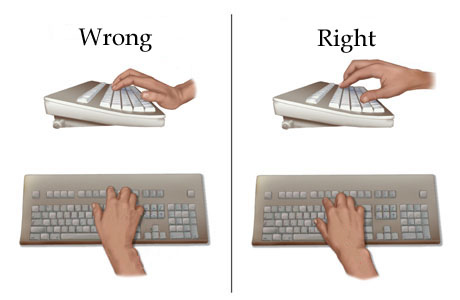
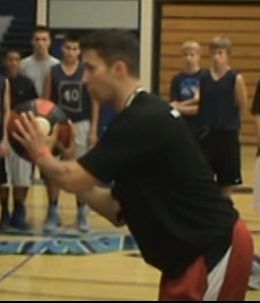
Wrong Shooting Hand Placement
-
By having your hand behind the ball it makes it harder to dip the basketball. This often happens when coaches teach index finger, middle finger, or split-finger in the middle of the ball. The result most often is to place your hand behind the ball which is incorrect. When this happens you lose your dip. Dipping connects your upper and lower body mechanics, aids in the timing of your release, helps with alignment, and Power. You also never teach index, middle, or split finger when shooting a layup, fade away, under handed free throw, or hook shot. Shot uniformity if a concept is true you will see it in other types of shots. Also with hand behind the ball it makes it difficult to shot through you shooting eye if you are cross eye dominate. The wrist and hand end up in an awkward position. Last with hand behind the ball you elbow will flare out in order for both palms to face one another. Most of the time when a player has there elbow flared out it isn’t a elbow problem. It’s a hand placement problem.
-
If it is wrong to have an upright wrist while typing due to tension why would it be the preferred hand placement for shooting a basketball? YOUR SHOOTING HAND SHOULD BE ON THE SIDE OF THE BALL NOT BEHIND IT IN A UPRIGHT POSITION
-
To clarify I’m not suggesting you will get Carpal Tunnel by shooting a basketball with an upright wrist.
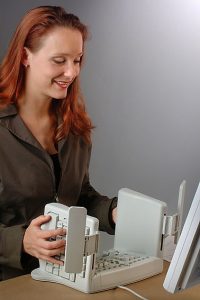
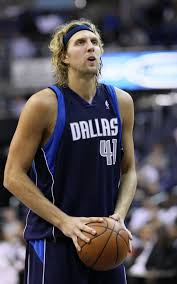
-
With your hands on the side of the ball your wrist is in a natural state, which is tension free.
“E” symbolizes eyes
S.E.D.R.S. PART 2 OF 5
-
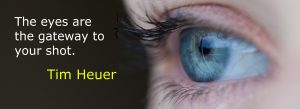 Your eyes switch between two focal points
Your eyes switch between two focal points -
Eyes initially focused 11″ past the front of the rim. This is the sweet spot but there are 2 ways to actually do this.
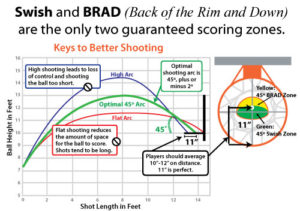

-
1st is by not aiming at all but instead just instinctually looking at the basket.
-
2nd way is by following Steph Curry and looking at the 3 hooks that hold the net.
-
Once your release the ball switch your focus to your hand & follow the flight/Arc of the ball.
-
All Great shooters watch the flight of the ball. How else can you adjust the arc if you never see it.
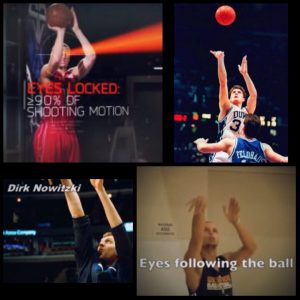
-
Eyes locked on the target 90% of the time the other 10% your watching the flight of the ball
-
When putting in golf you don’t stare at the hole you look down at the ball. In hockey, you don’t stare at the goal and not look at the puck. In Rifling & archery you don’t stare at the target you look through the sight. So in basketball, you don’t stare at the rim you watch your hand shooting along with the flight of the ball.
EYE DOMINANCE
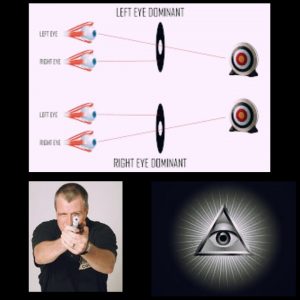
-
You need to find out what your eye dominance is since it will affect your shooting motion.
-
You shoot through your dominate eye.
-
Players who have an eye dominance opposite of their shooting hand have few options in regards to their shooting motion.
-
Learn to shoot with the same eye as their shooting hand Keeping with a motion that is in the middle or the same side as their shooting hand or…
-
Start their shooting motion on the side of their dominant eye or again place in the middle and shift over to your dominant eye.
-
It is Fundamentally CORRECT to be right-handed and has a shooting motion that begins on the left side of your body if…you are left eye dominate (this works vice versa as well)
-
Players such as Ray Allen, Kevin Durant, and Lonzo Ball are Left eye dominate but right-handed shooters. They start their shooting motion on their left side and shoot through their Left eye.
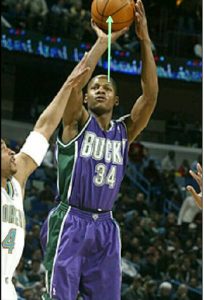
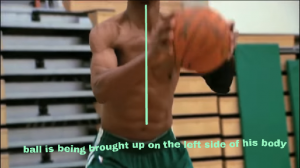
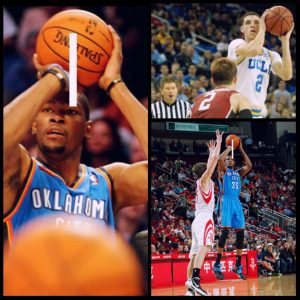
“D” symbolizes Dip
S.E.D.R.S. PART 3 OF 5
-
Rhythm=Dip
-
Dipping is important because it helps you time your release along with helping the ball go straight it adds power and most important it helps connect your upper and lower body shooting mechanics.
-
The dip synchronizes the timing during your release connecting your upper and lower body. As the ball dips down your knees bend as the ball hits your waist and begins to come up, out of your dip your knees flex out. Dipping helps the timing aspect of releasing the ball on your shot.
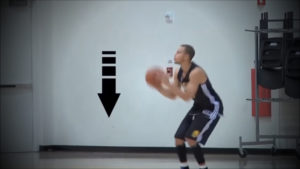
-
DIPPING vs NOT DIPPING = SAME SPEED
-
Your dip is connected to your knee flex and extension, By not dipping you don’t save any time. You simply continue your shooting motion at the same moment as your knee extension.
-
You are catching a wave of energy in your legs as it travels upward towards your release. If you don’t dip, once that wave of energy hits the level of the ball you simply ride it towards your release. NOT DIPPING IS NOT FASTER IT TAKES THE SAME AMOUNT OF TIME.
-
I suggest dipping because you GAIN the added benefit of timing & alignment since it becomes much easier to keep the ball straight within your shooting motion.
-
Dipping the ball is another aspect of your shot that helps the ball go straight.
-
Notice how all the players dip the ball
-
SHOOTING HAND ON THE SIDE OF THE BALL!!! I can’t stress the importance of this enough, and I understand how this goes against everything you’ve been taught about shooting a basketball. When your shooting hand is on the side of the ball it enables the shooting elbow to remain straight. Your shooting elbow will flare out when your shooting hand is improperly behind the ball. Remember when looking down at your hands before your dip makes sure that you only see all of your fingers except your pinky. This lets you know that your hands are in the correct position.
-
The starting position is the chest, and by flexing the knees you dip the ball and hands from the chest to your waist.
-
 As you begin coming up from your dip slowly start to rotate your palm towards the basket. Your palm should be almost fully rotated once it reaches the set point which is just above your shooting eyebrow. (Notice how the Shoulder, hip, & feet slightly rotate as well)
As you begin coming up from your dip slowly start to rotate your palm towards the basket. Your palm should be almost fully rotated once it reaches the set point which is just above your shooting eyebrow. (Notice how the Shoulder, hip, & feet slightly rotate as well) -
This turning action from your dip is revolutionary!! By rotating you give your shot more power, balance, and accuracy. Similar to a bullet fired from a rifle. The grooves inside the barrel provide rotation to the bullet which makes it go straight. A boxers jab exhibits the same characteristics it rotates the same way to give added power and accuracy. (See how Ray Allen & Steph Curry rotate their palms, through their shooting motion. Notice how you can see the back of their shooting hand from the side angle. This wouldn’t be possible if their hand was directly behind the ball.)
-
The palm shoulder and hips all rotate together.
-
It is also similar to an overhand/underhand lay-up. The same motion used to do a lay-up can and should be duplicated for your jump & free throw shot. We want to create UNIFORMITY with our layups, free throws, and jump shots.
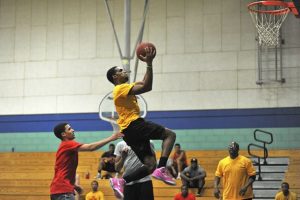
-
Lebron James has his shooting hand on the side of the ball as he goes in for a layup/dunk.
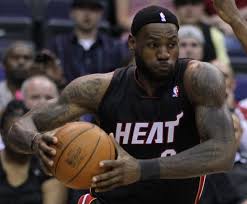
-
Newton’s law of Motion states an object at rest remains at rest and an object in motion remains in motion until it is acted upon by an unbalanced force. Dipping makes it easier for the ball to stay within the shooting motion up through the shooting eye.
-
No need to dip when catching a pass below your waist or off the dribble, you’re already in your dip.
-
Last thing on dipping—DON’T TEACH index finger, middle finger, or split-finger in the middle of the ball. When you do this the result is to place your hand behind the ball which is incorrect. When this happens you lose your dip. When you don’t dip you lose all of this.
-
1. can’t connect your upper and lower body shooting mechanics
-
2. makes it harder on the timing of your release
-
3. you lose alignment “newtons law of motion that an object in motion remains in motion until it is acted upon by an unbalanced force.
-
4. You lose a little bit of Power as well.
“R” symbolizes Release
S.E.D.R.S. PART 4 OF 5
-
The release should be smooth and effortless 70% off your maximum speed
-
Shooting motion should be in line with the shooting shoulder & shooting eye
-
Lock the elbow and let the wrist flop down.
-
The arc on your shot should be between 42 & 48 degrees. The optimal arc is 45 degrees. At 180 Coaching we utilize the 94FiFty basketball to track players arc along with other shooting & dribbling statistics.
-
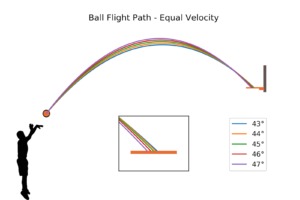
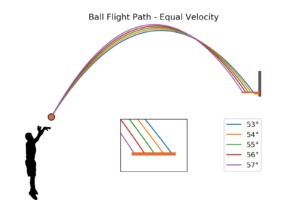
-
The wrist should be loose and flop down, Don’t overemphasize the snapping of the wrist, in doing so adds more variables to your shot. Simply extend your arm locking the elbow and allowing the wrist to loosely flop down. I prefer the 4 fingers down release (Used by both Steph Curry & Ray Allen).
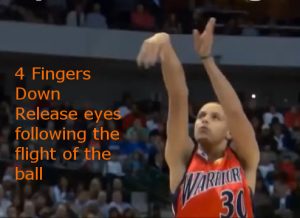
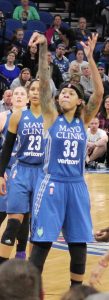
-
Offhand after release stays on the side with the off-hand thumb tuck in (Steph Curry) or not tucked in (Kyle Korver).
-
The shot is short your release is late you need to release the ball half a second quicker
-
The shot is long release is too fast you need to wait for a half-second or so before you release your shot.
-
SEE OFF HAND PAGE FOR MORE DETAILS***
-
OFF Hand after the release fingers rotate so they are pointing towards the hoop. Allowing for a longer hand surface to guide the ball.
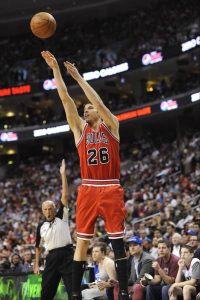
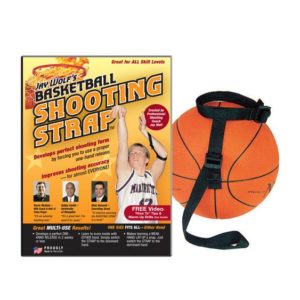
- I Highly recommend the Jay Wolf’s Shooting Strap with you off hand fingers point at the rim at the end of you release.
“S” symbolizes the Sweep & Sway
S.E.D.R.S. PART 5 OF 5
-
Sweep & sway includes a subtle hip & shoulder rotation along with your feet turning. This twisting action in combination with your sweep and sway gives your shot power along with alignment.
-
Don’t over-rotate the feet they should land no further than a maximum of 90 degrees.
-
As you shoot you want your feet to sweep forward & rotating towards your off-hand.
-
By sweeping the feet forward the shoulders will naturally swayback, this makes it easier to track the arc on your shot.
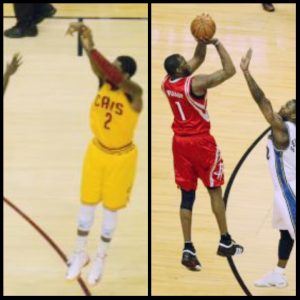
-
By Sweeping & Swaying it makes it easier to follow your arc with little head movement.
-
The longer the shot the great the sweep
-
This relaxes the shoulders while avoiding tension.
-
When landing has the feet close together 1-3 inches or they can be wide personal preference.
The HOP vs 1-2
-
When it comes to shooting footwork I often get asked whether to hop or 1-2 step. Answer: Both but the HOP is a superior technique.
-
When running at full speed you will need to practice a jump turn. Jump Turn is just a hop to slow/stop your momentum and a turn to get your alignment right.
-
You need to know both but as the game evolves so too do your shooting fundamentals. Utilizing the hop and a jump turn are modern techniques that aid in getting your shot off faster.
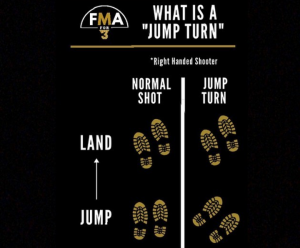
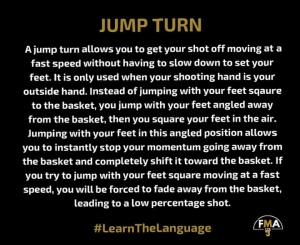
#1 OBJECTION to the TURN
You’re off balance when you turn, you need to jump straight up and land straight down. Land in your footsteps.
BALANCE=ROTATION
You are in balance while you are rotating. Similar to balancing a basketball on your finger. The rotation gives you balance. It is much easier to balance a basketball on your finger when its spinning as opposed to when it is not spinning. With no rotation the ball will roll off your finger, but when you spin the ball, it balances perfectly.
SPECIAL THANKS GOES TO:
Tom Nordland Swish Method
Paul Hoover Pro Shot
Coach Nick BballBreakdown
Collin Castellaw Shot Mechanics
Splash Lab
Micah Lancaster @micah_lancaster
Bryce Stanhope @Brycestanhope
Loop Basketball Training
Fletcher Magee Academy @mageefor3
Coleman Ayers @byanymeansbasketball

Please contact me if you would like me to speak at or give a shooting clinic to your organization!!
